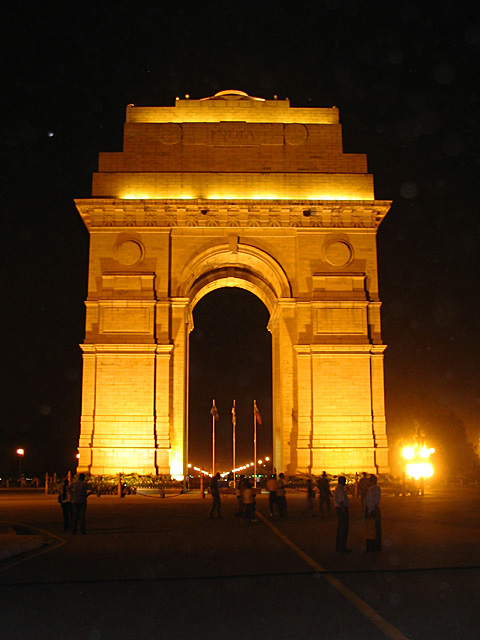Over the last year or so, the image of India, like the Indian Test team, has taken a beating. The halcyon days of India Shining, of India Everywhere and the world’s “fastest growing free market economy” are now over; the brand-builders and spin-masters are not able to conjure up the magic of old. Instead, we have the picture of a struggling economy, just chugging along at barely over 5% a year; simmering social unrest fuelled by a hugely inequitous society; scam-a-day revealations of corruption; a divisive polity and – certainly till recently – an indecisive leadership. Many feel that if BRIC is the new power-house of the global economy, the “I” in it should now mean Indonesia, not India.
Yet, any attempt to write-off India may be, as Mark Twain said about false reports of his demise “The report of my death was an exaggeration”. After all, the fundamental underlying factors driving the India economy have not changed: demographics, a huge domestic market, an extensive education system with a sufficient topping of high quality, a thrifty and hard-working population, and a strong institutional base. However, converting these potential advantages to real economic benefit requires appropriate action.
The gains of a proportionately large young population, the “demographic dividend”, can be reaped only if they are imparted sufficient education and trained in skills that the economy needs. While recent years have seen a major thrust on education – through both the Right to Education at the school level and a huge expansion at the university level – and an ambitious skills development programme, their results depend on efficient implementation. It will not be easy to simultaneously achieve the goals of expansion, equity and excellence. The veneer of a few institutions producing high-quality professionals will no longer be sufficient, especially in an evolving, globally-competitive market for goods, services and ideas. We will need to be flexible and innovative not only in content and pedagogy, but also in the administration and structures of the education system.
The advantages of a large domestic market are currently reduced by regulations and structural barriers, inhibiting the free and easy movement of goods across the country. These include barriers to movement of agricultural commodities, octroi, and too many and inefficient toll collection points, causing unnecessary harassment and delays. Poor infrastructure slows movement. The introduction of GST – much delayed, already – will certainly ease the numerous tax-related obstacles and provide a big boost to the economy. Similarly, changes in the APMC regulations, and better management and use of technology at toll collection points on highways, can lower costs in the movement of goods.
India’s institutional base – a strong and fair legal framework and an independent judiciary, in particular – have long been projected as major strengths and a comparative advantage. In addition to the Election Commission, independent regulators, including SEBI and RBI, are much respected around the world. All these contribute to business confidence, especially amongst foreign companies and investors. However, the gains of many years have been endangered by retrospective tax laws, cancellation of contracts/licenses which had been entered into within existing laws, and perceptions of government pressure on regulators. Institutions and their credibility are built over decades; destroying them is, unfortunately, much faster and easier. Government needs to tread with caution to sustain and build on the respect that our institutions command overseas.
Globalisation has been driven not only by trade and investment, but equally through bonds of religion and ideology, which – aided by new communication technologies – transcend national boundaries. The battles of today are for the hearts and minds of people rather than territory. In a world where wars between countries have become rare, “soft power” has become far more important. While recognizing the importance of the economic dimension, the image of India needs to go beyond that. India’s unique advantages lie, in fact, in other areas.
India has substantial soft power assets: its rich culture – including films, music, yoga and spirituality – cuisines, historical heritage and natural beauty. These are a powerful magnet for people around the world. Of late, the country is also recognized as a hub for innovation. In the developing world – and, often, elsewhere too – its democracy and electoral process is highly regarded. A large number of countries admire India’s higher education system, despite its many flaws, and the top institutions are held in awe even in the developed world.
Leveraging these advantages can position India strongly in the mind-space of the global community. This, however, demands strong and pro-active action by both, government and industry. Image building without substance is like a soufflé: hot air will hold it up, but it will soon collapse. Therefore, in each area, concrete steps on the ground are necessary. In education, for example, the high drop-out rates and very poor quality at school level need to be quickly remedied. Higher education calls for major reform. In addition, a large scheme of scholarships (say, 5000 a year) for foreign students for study in top universities and professional institutions will engender much goodwill and be an investment for the future (foreign students develop a special relationship with the country; Suu Kyi is but one example). Similarly, promoting Indian cinema, music and tourism abroad can lead to great benefits. An independent global TV channel – aimed at viewers beyond the Indian diaspora – which sees world events through Indian eyes can be another contributor.
It is time to re-image India, going beyond the purely economic. A private-public partnership, like the Brand India Fund, could be the best means. Such re-positioning will certainly provide business and economic advantages, but will also give India a greater share of voice resulting in geo-strategic benefits.


